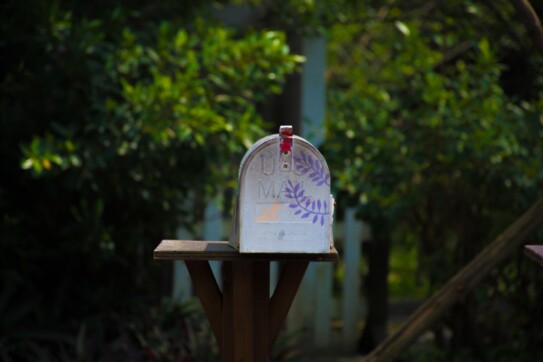How to Use Data to Reduce Your Direct Mail Marketing Costs

With the rise of mailing costs coupled with worldwide fundraising competition for every cent, your nonprofit organization can’t afford to guess when it comes to your fundraising program’s direct mail expenses.
Rather than merely hoping you’re making a wise marketing spend—or simply doing what you have always done—it’s time to let the data drive your direct mail marketing programs. When you allow data to guide your direct mail strategy, your organization can save time and money.
Direct Mail Is Still King
In a world where social media and smartphones rule, why would anyone waste their time with snail mail? If you have an annual giving program (or ever hope to) you know the answer: Your donors respond to mail in a physical mailbox.
- Online sources have not surpassed 15% of overall giving. Even with double-digit, year-over-year increases, online donations have not cleared 15% and even have dropped for some institutions.
- Direct mail makes for better retention rates. Donors acquired through direct mail stick with you, resulting in better Long-Term Value (LTV).
- Your message gets delivered. The open rate is roughly 18% for emails. Direct mail? It’s around 90%.
- Response rates are 5X higher. Email response rates hover around 1%; the direct mail response rate is 5-9%.
- Your data for direct mail is more reliable. Most organizations maintain valid home addresses, while email addresses and phone numbers may be less trustworthy.
- Direct mail is an important part of any multichannel marketing campaign. Direct mail enhances your other marketing efforts, which can serve as reminders for constituents to respond to that direct mail piece.
- Even Gen Z loves direct mail. According to a USPS report, 72% of teenagers and 20-somethings are excited to discover what the mail delivers every day.
The first step in becoming data-driven and saving your organization dollars, donors, and time is knowing where you stand and where you are trending. You should have KPIs (Key Performance Indicators) to measure your fundraising programs, including your direct mail plan:
- What is the return on investment? How many dollars did you raise and how much did it cost you?
- Through which vehicles do you acquire new donors? New sustainers? If you are investing in acquisition mailings but acquiring most of your new donors from events, this may be an area where you can reduce your mailing costs.
- What are your delivery formats? If you are interested in retaining donors (and you should be) analyzing your campaigns can help you determine where your dollars should be spent. If your event participants are only event donors, steward them via other mediums less expensive than direct mail.
If it isn’t broken, don’t fix it! If you have a program that does all the things you need it to, don’t mess it up (even if it’s expensive)! Find ways to reduce costs that do not damage the quality of the program. For example, if you provide a premium program that donors love, don’t stop it. Consider raising the donation amount to receive it, allowing your constituents to opt out, or renegotiating with vendors to reduce costs.
Know the Challenges with Direct Mail Marketing
The biggest problem with direct mail marketing? It is expensive in all the ways you want to save: time and money. If you prepare your own mailings, you will spend hours prepping lists, standardizing, printing, and sorting. If you use a mail house, it will cost you a pretty penny even before you get to the cost of the mail piece and postage.
- Nonprofit postage rates increased an average of 7.8% in 2021, with the potential for inflation-based pricing to hike rates by as much as 5% in 2024.
- Paper prices have jumped more than 40% and fuel costs for transport have increased as well.
Data Can Help You Reduce Mail and Print Costs
Maintaining data health is the best way to keep your mailing costs down, in any economic environment. Poorly maintained data leads to poorly managed programs. In the average database, 15% (or more) of addresses are invalid or incorrect and as many as 1% of records are deceased. Returned mail is wasted time and money.
Ironically, the more sophisticated your program, the more opportunities arise for bad data. Having volunteers enter gifts and outsourcing your direct mail campaigns may save you time and money, but doing so can also put the health of your data at risk.
Start with (and Maintain) an Updated List
Create a data health routine that is easy, documented, and performed regularly.
- Quarterly National Change of Address (NCOA) updates should be run every 90 days on your entire house file even if you are not mailing in this period. This process should include:
- Going back a full 48 months and covering all move types (individual, family, and business)
- Identifying “bad addresses” (Moved, No Forwarding Address, PO Box Closed, etc.)
- Making sure all updates make it back into your database
- Removing invalid addresses and any that cannot be standardized.
- Quarterly Standardization/CASS Certification can be done as a part of your NCOA update or separately. This process should fix or identify badly formed addresses so they can be corrected or removed from your mailing lists. Most important, this standardizes address formats.
This is the first and most essential step in the duplicate identification process. A tool like AddressAccelerator™ for Blackbaud Raiser’s Edge NXT® can standardize your addresses in a batch to make it easier to catch duplicates when adding new constituents.
- Annual Deceased Identification prevents a bereaved family member from receiving mail requesting a donation from a lost loved one. That’s never a good look for your organization.
Invest in a scrub for deceased records for your entire house file at least annually because, as amazing as donor database managers may be, they cannot review every obituary in every city where you have supporters. Marking a donor as deceased is a big deal, so if you want to scrutinize your results more carefully, that is acceptable, but exclude those records from your regular mailings until you do.
Your data provider can make your verification process easy if they have the right information. Your service should:- Search for at least 10 years, although longer is preferable. This is most important if you have never done a deceased update, or you receive data files from other sources and this data was not checked.
- Look at all parts of the name (including middle initial and suffix) and the address for verification. Accounts for juniors, seniors, etc.
- Return a deceased date to confirm your match is authentic. If they have given a gift since the deceased date, this may be a generational match or a spouse giving on behalf of your donor.
- Include a verification type (death certificate or obituary) so you feel more comfortable marking the record deceased.
- Return a birthdate for further confirmation and identify a generational mismatch if you do not have suffixes in your data.
- Fill the holes in your contact information: There are less expensive ways than direct mail to reach your supporters, so it’s worthwhile to update your files.
- Ask for phone numbers and email addresses in face-to-face interactions.
- Give supporters the option to email receipts on your direct mail forms and include fields for a phone number and email in your response card.
- Invest in phone or email append services and use them!
- Ask for and append cell phone numbers. Text to Give is a growing avenue for fundraising.
- You can’t do anything without an address, but you can do so much more if you have all the contact information.
Apply Smart Segmentation
You always want to dance with the person who brought you. In fundraising terms, that means showing love to your loyal supporters. Good stewardship, however, may not require you to keep sending mail to donors. Have you asked your regular donors to become sustainers? Allowing donors to stop receiving mail from you while still supporting your organization may be the best gift you can give each other. Include the option to become a sustainer on your website and in your direct mail programs.
Another way to segment your list is by analyzing when your donors give. If you have donors who only donate at a certain time each year:
- Focus your direct mail only in that period and use less expensive methods other times of year.
- Provide the opportunity to be an annual sustainer or create a membership or giving club to accommodate one-time annual givers.
Stop Digging
The law of holes states, “If you find yourself in a hole, stop digging.” When it comes to making improvements in your direct mail marketing program, don’t rush to judgment. Making decisions purely to save money may cost you more in the end. The data will show you if the changes you plan will be actual improvements.
Start with low-hanging fruit by improving bad data and reducing returned mail. Next, measure the success of existing programs and eliminate what’s not working, then invest in growing what is performing well. Also, promote your sustainer and/or membership program to retain revenue and reduce costs. Continue to round out your donor files with additional contact data so you can experiment with other solicitation options. These improvements are recession-resistant, saving you money on your direct mail campaigns no matter what the economy does next.


